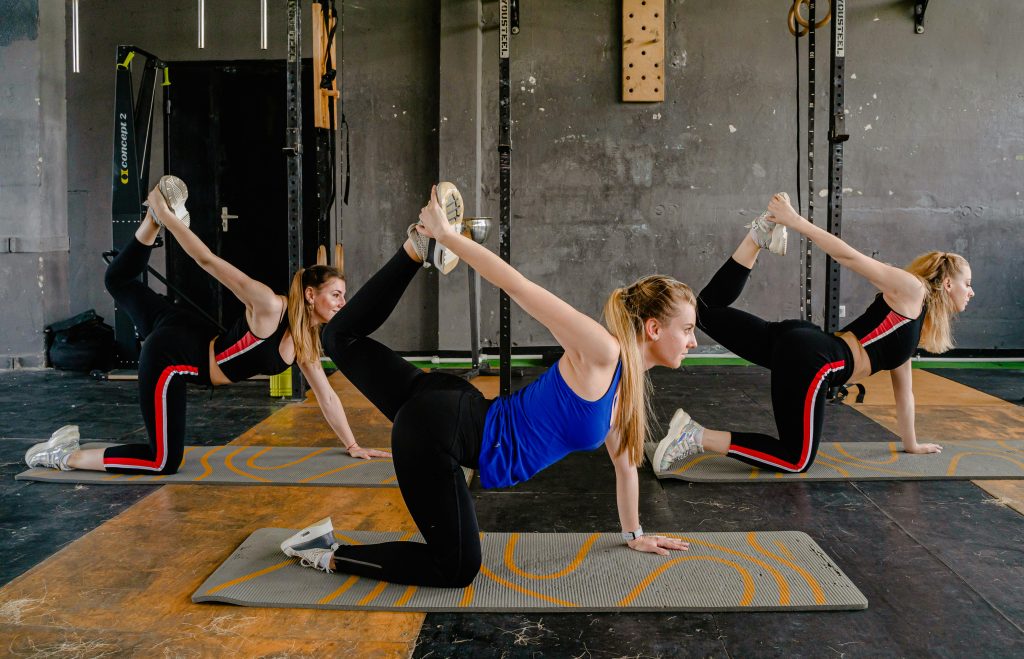Are you looking for a way to eliminate boredom, burn more calories, and take your workouts to the next level? Interval training is then definitely for you. Read and find out what are the advantages of such training and for whom and why it is not recommended.
Advantages of training …
Interval training involves alternating high-intensity exercise with medium-intensity exercise. It should not be confused with circuit training. Circuit training involves moving from station to station and performing a certain set of exercises. It can be aerobic, strength or interspersed (aerobic-strength) training. During such training, there is no scheduled rest between the sequence of stations, while with intervals, short breaks between exercises are required. Adding intervals to your plan will bring many benefits, not only physical but also mental:
You lose weight faster – the more vigorous your workout is, the more calories you burn, so even a short but intense exercise will help you burn calories faster.
There is no room for boredom – if you change your exercises often and their intensity, you will not experience boredom during training. And thanks to this, you will not only speed up the appearance of the expected results, but also avoid falling into a routine.
You don’t need professional equipment – you already have the equipment you need for such training – your body! Thanks to this, you can do it even at home and you don’t have to worry about the lack of loads. The only thing you will need is determination and effort put into training.
You become fitter – thanks to this type of exercise, you develop your general fitness, fitness, agility and motor coordination. The difference will be visible even when performing everyday activities that may have been difficult for you in the past.
You save time – and we know that we are constantly missing it. Interval training allows you to burn the same or even more calories than an hour-long session of medium or low-intensity training. What’s more, during intervals, your metabolism jumps into top gear, so you burn calories up to several hours after your workout!
Ok, so how do I start?
If you are a beginner and like exercising outdoors, I recommend walk-runs. It is worth taking a phone with a stopwatch with you, which will count down the time. You can start with a 2-3 minute walk, then move on to a 30-second run, then walk again, run again. As your fitness improves, you should reduce your walking time and increase your running time, e.g. 30 seconds of walking, 1 minute of running.
During the marches, it is also worth taking advantage of the terrain. All kinds of hills are perfect for this, because you exercise more intensively by running up the hill, then you give your body a rest by going down it. The more such runs during training, the better.
Intervals can also be done while cycling or swimming. The principles are the same, you alternate intense effort with less intense effort, aiming to make this intense phase longer and rest shorter and shorter.
If you do strength training, you can also change your training to interval training without changing your training plan. All you have to do is shorten the rest between sets. Not only will this help you spend less time in the gym, but you’ll also get your heart rate up and burn more calories.
The version for very advanced people who like challenges at the same time looks like this:
1 set is a set of 3 exercises below. Repeat the series every minute!:
- 5-pull-ups on the bar
- 10-push-ups
- 15-squats
- Exercise time 20 minutes.
This type of training is very demanding. Your body needs to be able to face the pressure and be able to recover from the effort. If you have heart or circulation problems, intervals are not for you. People who should avoid HIIT training are diabetics, very obese people (high intensity of exercise combined with being very overweight has a bad effect on the joints and can lead to injury), and people with very poor condition. Then it is worth starting with low and medium intensity workouts first, and as strength and fitness improve, move on to intervals.
